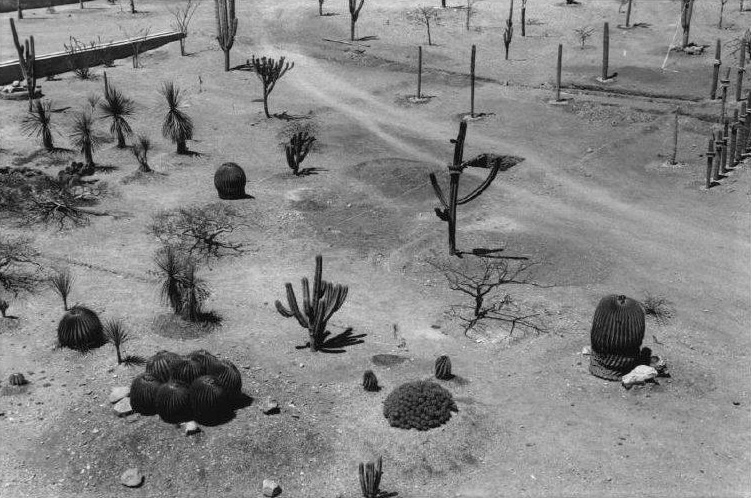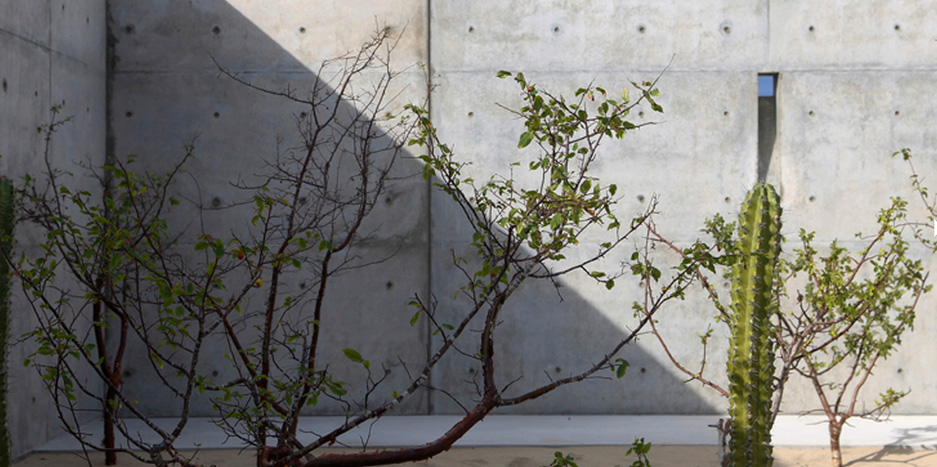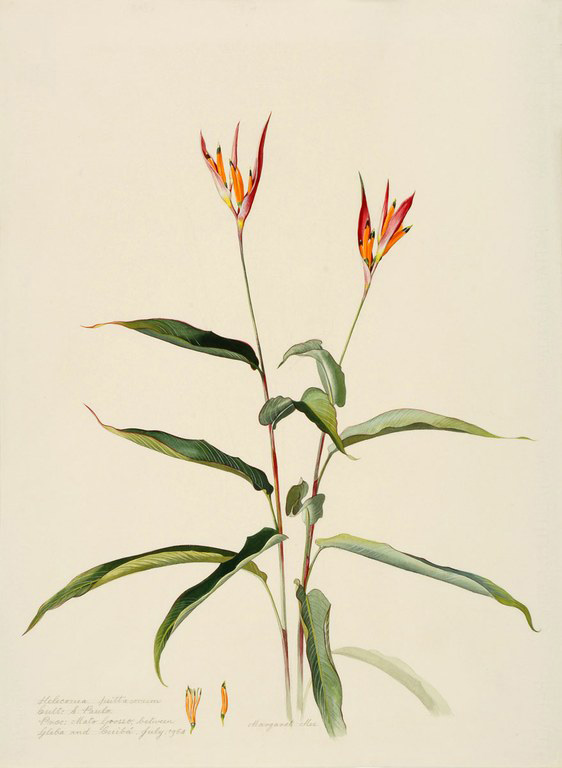One says Mexico: one means, after all, one little town away South in the Republic: and in this little town, one rather crumbly adobe house built around two sides of a garden patio: and of this house, one spot on the deep, shady verandah facing inwards to the trees, where there are an onyx table and three rocking-chairs and one little wooden chair, a pot with carnations, and a person with a pen. We talk so grandly, in capital letters, about Morning in Mexico. All it amounts to is one little individual looking at a bit of sky and trees, then looking down at the page of his exercise book.
—D. H. Lawrence
1.
Or, in my case, something rather grander—inconceivably grand, in comparison with what Lawrence or Graham Greene were prepared to put up with in the Twenties and Thirties, respectively. A concrete casita, one of six, with a palapa roof and a paved space for two recliners to the seaside. The noise of the booming surf, to which my sleeping ear never becomes attuned: I think there must be a storm breaking somewhere, or the heavy morning traffic, the garbage trucks of Harlem making their rounds. I think of Wallace Stevens: “In that November off Tehuantepec/The slopping of the sea grew still one night…” But it is not slopping, and it does not grow still. Like everything else, it is inconceivably grand.
2.
I must have landed in the foothills, for the first impressions I had were of piles of rocks, as if emptied casually from a bag. And among these rocks and cactuses, a leafless tree with yellow flowers, a profuse flowerer, unfamiliar to me. Well, some things have to be unfamiliar; I have never visited this part of the world before. But it is often true of the tropics that the flora seems international—the oleanders, the bougainvillea, the jacarandas, and then the economic plants—the papayas and mangoes, the coconuts and so forth. They have spread long since. The little red or orange, or red-and-orange Lantana, growing at the foot of a prickly pear just twenty feet from where I am typing this, is a roadside flower in the Philippines. Whenever I saw it on mountain journeys in Luzon, it would remind me that here there had once been a little hut, and around that hut most likely a few old cans planted with flowers, and some orchids found in the nearby forest, hanging from the eaves. Now the plant-breeders have paid attention to the lantana, and developed pure versions to add to the characteristic bicolor—a deeper red, a plain yellow—and also a pastel bicolor in primrose and pink, called Ham and Eggs. I’ve grown that in Harlem along with various Mexican plants, tithonia and the salvias I like best. I haven’t yet seen those here—they may be more for the mountains. But the yellow flowered tree—I know why it would be unfamiliar. Its apparent habit of flowering without leaves must have counted against it. Nobody can tell me its name.
3.
So we came through the rocky, jumbled yellow-flowered foothills, and onto the coastal plain, with pasture for cattle, and white egrets among the cattle, and mangoes in groves, and I half expected to see rice paddy. But in due course we turned off along a sandy track and came to a kind of scrubland of sand and organ cactuses and prickly pears and a brown shiny misshapen small tree, with the same habit as the paper-bark maple: that is, its thin translucent bark peels off like a paper wrapper. It looks its best just after dawn, when the sun shines through the bark.
4.
This duneland scrub is what, in the present state of my knowledge, I mean by Mexico. They had to cut it back when they built Casa Wabi, but once it was complete they set about replacing the scrub right up to the edge of our casitas, so that in due course it will grow up to the paved space with the twin recliners, and will block out the view of the sea. My guess is that this is a way of stabilizing the dunes. It could also be a security measure, since the scrub seems impenetrable. The same approach to landscaping has been adopted at our neighbors’, the Hotel Escondido. It means that the birds, notably the sand- colored doves, have their habitat. So too do the famously secretive black-striped snakes. And then there are the boa constrictors, one of which appeared within fifty feet of the kitchen, where one of the staff threw stones at it to discourage it. Instead of going away, the boa climbed into one of the misshapen trees of the scrub, and settled down. A shorter boa (the first had been impressively thick) took refuge from the sun in one of the artists’ studios.
Advertisement
5.
One turns on the light. One looks around the floor. Then one checks the ceiling. One is looking for snakes first, then spiders (tarantulas are mentioned), and then bats. I should add that it is better to avoid the saliva of the giant toads. There is a gap between the top of the concrete walls and the palapa (palm thatch) roof. It was suggested to the architect, Tadao Ando, that this gap might be filled with the same kind of screen as is used lower down the walls, where there are louvered shutters. The suggestion was refused. The gap was integral to the design. One looks again at the gap. Then one remembers the advice to shake the bedclothes before getting into bed. This is the precaution against spiders and scorpions. Sometimes one just forgets the precaution.
6.
It is impossible to know the proper names for everything, yet how difficult it is to write without such knowledge. “A leafless tree with yellow flowers”—what a confession of defeat. How crude when compared to “white egrets among the cattle” or even better “white egrets among the zebu” or “white egrets among the white zebu.” When I first saw those egrets, my mind went back to Cambodia in 1973, when I was walking along a road just north of Phnom Penh, towards the front line which was then at Prek Phneou. There were these white birds among the water buffalo. I said to a colleague, the cameraman Neal Davies, “What are those white birds? Are they egrets?” I saw him suppress a smile. What was this crazy Englishman thinking about? At any moment we could be fired on. But Neal didn’t have to describe the scene in words—he had his camera. I needed all the word-kit: flame-trees, jacaranda, egrets, buffalo, 105 outgoing, small-arms fire incoming, AK-47. Without the words one is stuck. One is so imprecise. I say to my students: you have to know what everything around you is. You may not need to use all the words, but you have to have them at your disposal. What kind of tree is that? What style of building?
7.
A fisherman’s house, nearby. His working capital: an outboard motor and a chainsaw, his nets. Not all of the house is brick or concrete, though it aspires in that direction. His son, I presume it is, leaves a motorbike there. The house owner is being interviewed, and I listen without understanding much. He is happy talking. I have time just to look. There are three pieces of printed cloth hanging up—perhaps tablecloths. The first has a pattern of parrot tulips, the kind of tulip that has a crinkled edge to the petals and a dash of contrasting color, like a paint-stroke. A Dutch flower, something bred in the seventeenth century. The second piece of cloth bears a design of electric Chinese lanterns. It brings a whiff of 1960s coffee shops. The third design I strain to see: it consists of Martini glasses but—as far as I can tell—with a shrimp or prawn sitting atop the glass. It seems to say: seafood cocktail.
8.
These bursts of ornament and pattern strike one all the more after a few days at Casa Wabi, where—unless you count the weave of a basket or the rush seat of a chair – there is no pattern at all. There is the underside of the palm-thatch roof. There are the regularly spaced holes on the concrete blocks. There is the texture of the pebble-finished floors. And for ornament there is a vase of red-and-yellow heliconias, the lobster-claw flower which people here call “parrot’s beak.” The wood surfaces are mostly rough and seem untreated. The concrete is concrete. This is modernism. This is Japanese austerity.
9.
One turns to the dune flowers, those specialist plants that can survive in the heat of the sand. One is a creeping five-lobed magenta flower with glaucous rugose leaves, whose blossoms open at dawn and seem to last for a day. One is a kind of yellow marigold, a tagetes. There are the red lantanas. And then there are orchids growing on the small trees of the scrub. I haven’t exhausted the list, but I have run out of names.
10.
Two sightings of whales; dozens of pelicans; fork-tailed seabirds that I believe are frigate birds; waders with long beaks; sand-colored doves with chestnut wings; black birds whose name I do not know. Butterflies. A small bat in my bathroom. Boa constrictor. Black-striped snake. Daniel saw a dead corallino snake, the dangerous kind. Giant toad under the breakfast buffet. Horses. Zebu. Cattle. Donkeys. Chickens. Crocodiles have been seen here but not by me. The baby ocelot in the cage by the kitchen door (waiting to be transferred to a reservation). The dogs.
Advertisement
11.
Some time in the eighteenth century, a group of African slaves fetched up in Acapulco. It is not known which part of Africa they came from. Members of, or rather descendants of this group become peons in the cotton fields after the abolition of slavery. A peon was paid not in cash but in goods, and sometimes in vouchers that he could exchange with the plantation owner. In the nineteenth century, what I have called the coastal plain was still jungle. The peons cleared the jungle in order to create the cotton and coffee plantations. Tobacco and sugar preceded the pastureland we now find, the fields where the cattle egrets coexists with the zebu. These families of African origin settled in at an area of the Oaxaca coast that is still barely accessible by road, at the mouth of a great lagoon. Isolation no doubt suited them in some ways. Their community survived, and lives now from fishing and from a kind of tourism that is largely confined to a couple of short seasons of the year.
12.
Setting out by boat from Zapotalito, I noticed with a jolt that there was a bittern sitting in its typical “hunched shoulders” position, in the rigging of a neighboring vessel. In England, bitterns are not associated with areas of human activity—they lead a more lonely existence: “the bittern booming from the sedgy shallow” captures their call, and their marshland habitat. In the Philippines, among the fishponds in the mangrove swamps, they were a more familiar sight. But this one was bigger than the Filipino kind.
13.
It is when you visit the lagoon that you begin to understand what you have already seen on the coast: the wealth of birdlife, the pelicans in their dozens, with the frigate birds, depends on this now-protected hinterland. The birds stage their fishing expeditions to the open sea, but they live and breed in the lagoon. I saw more than a dozen pelicans in one roost. Cormorants, too, in large numbers. The boat took us by the scenic route, through tunnels in the mangrove, and on the narrower creeks there were large herons, flying ahead of the boat, disturbed (but not much disturbed) by the motor. Every kind of fishing bird—with the possible exception of kingfishers—seemed to have a representative here—eagles, herons, bitterns, egrets, frigate birds, darters (?), gulls, and the pelicans with their mysterious Martin-ware expressions. And then there are the crocodiles (not that we saw them, until we paid a visit to the cocodrilario), which thrive in the brackish waters of the lagoon, and only venture out to sea occasionally, when passing from river mouth to river mouth. On one of these journeys, a croc was found recuperating from the sea water in the swimming pool of Casa Wabi, then under construction.
14.
Birds everywhere. Fish everywhere. And when we came near the ocean we began to encounter fishermen of clearly African descent. Their village, with its two aspects, the tourist side facing the ocean and a great expanse of beach, the fishing side facing the lagoon, looked like a little paradise. One had to remember that, if its isolation had been an advantage for its founder members, peons of the lowest class of the society of the day, it must also—as was the whole coast—have been plagued with disease and other forms of daily risk. The fishing (crocodiles apart) might have been the easiest thing about it. As it is, today the village is painted with propaganda about public health, explaining the risks and symptoms of tuberculosis, influenza and so forth.
15.
The houses are often painted in bright colors, combinations that can probably be traced to the availability of individual pigments at the time of painting. But sometimes a color plan is evident: an imposing bright green facade with a yellow trim, or a yellow facade with magenta stripes. One small inn showed boldly in bright green at the base and different hues of blue on an upper story, but set off by contrasting panels of chocolate and hazelnut. Gardens, where they existed, pushed in the direction of a riot of reds. A Catholic church, with no priest or weekly service, used mainly for weddings and baptisms, was painted in the colour known to Benjamin Moore as Bermuda teal. And in this pleasant environment, women with hair combed out in Afrostyle, but men—obeying the current international fashion—tending towards the faux-hawk.
16.
One says of any great subject as yet untackled—Mexico, for instance—Oh, that’s such a big undertaking, that’s going to need such preparation. Then something happens and you just have to go in there anyway, in all your ignorance. What happens next is you acquire a little piece of knowledge, a little amount of experience, and this experience is your bridgehead. Lawrence sits at his little onyx table, sniffing Mexico, listening to the birds, thinking about the Aztecs: he is creating his bridgehead. Or one gets into a fiberglass tourist boat and thinks: Wait a moment, isn’t that a bittern? One wishes one had brought a birdbook. But then again: Why? This is a birdbook. This lagoon with its peons fishing from their canoes, this place where pelicans drop vertically from the sky into the ocean, this guano-whitewashed headland—this, for now, is Mexico. This is the bridgehead. All the complications can wait.
Casa Wabi, in Puerto Escondido, Oaxaca, was founded by the Brooklyn-based, Mexican artist Bosco Sodi, as a place of retreat for artists, musicians, and writers of all kinds. It was designed by Japanese architect Tadao Ando and opened late last year. The visiting artists pursue their own work, but are asked to produce some kind of a log, as a record of their stay. In January, I was the first writer to stay at the retreat. I spent my time working on a play. This is my log.





